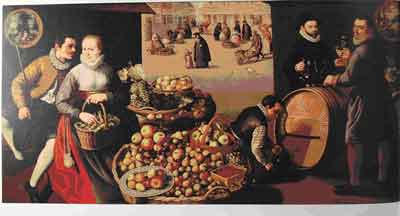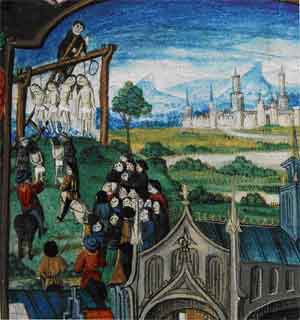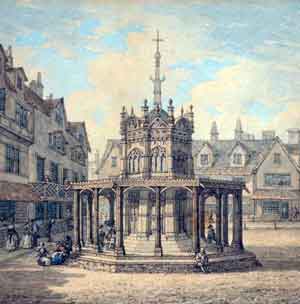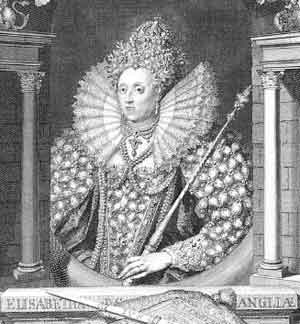
Tudor Market
In the absence of permanent stalls the market place was more than an arena for trade, it was in fact a huge public space in the heart of the community which became the focus for pageantry, celebration announcements and the odd public hanging!
This was never more true than in the Tudor era.
- Trade
- Punishment
- Market Cross
- Pageantry
 During this period butchers were particularly numerous on the market, They were an important source of revenue for the city with stall rentals increasing fivefold between 1531 and 1535. In 1565, country butchers hired as many as 37 stalls and this number doubled within the next hundred years.
During this period butchers were particularly numerous on the market, They were an important source of revenue for the city with stall rentals increasing fivefold between 1531 and 1535. In 1565, country butchers hired as many as 37 stalls and this number doubled within the next hundred years.
Also of note was the increasing variety of goods that were being brought into the city, these included items such as sugar, molasses, figs and prunes whilst in 1581 a cargo of 20,000 oranges and 1,000 lemons reached Norwich in time for the annual St Bartholomew’s Fair.
Unfortunately in 1590 a fire destroyed the majority of the fishmongers’ and butchers’ stalls, necessitating the sum of around £156 from the city’s “Repairs Fund” to be spent on their replacement.
The market place became the perfect stage for public punishments. Not only was it next door to the Guildhall, which was both prison and court, it was perfectly placed to attract huge crowds, indeed the stocks and pillory stood at the eastern end of the Guildhall! Thus offenders brought before the court and convicted of such “immoral” acts as: “a woman entertaining three men in her house after midnight” were paraded around the market place wearing paper hats displaying details of their offence, often followed by a crowd banging on pots and basins.
Hangings were common in the market place, although records are generally sparse. It is known that gallows
were set up at the market cross for the mass execution of Kett’s rebels in 1549.

The market place became the perfect stage for public punishments. Not only was it next door to the Guildhall, which was both prison and court, it was perfectly placed to attract huge crowds, indeed the stocks and pillory stood at the eastern end of the Guildhall! Thus offenders brought before the court and convicted of such “immoral” acts as: “a woman entertaining three men in her house after midnight” were paraded around the market place wearing paper hats displaying details of their offence, often followed by a crowd banging on pots and basins.
Hangings were common in the market place, although records are generally sparse it is known that gallows were set up at the market cross for the mass execution of Kett’s rebels in 1549.
 During this period the Reformation altered the nature of many traditional celebrations which took place in the Market Place.
During this period the Reformation altered the nature of many traditional celebrations which took place in the Market Place.Hitherto the year had revolved around a series of festivals linked to religious celebrations often involving public procession. Post reformation the mystical element of public celebrations was lost. However, it remained a place for celebrating Royal occasions, national triumphs, military, victories and local civic events.
Thus it was in the market place that a procession was held to mourn the death of Henry VIII followed soon after by a pageant to celebrate the succession of Edward VI. Whilst one can only imagine the excitement in 1578 when Queen Elizabeth herself crossed the “goodly garnished” market place en route to her lodging at the Bishop’s Palace.